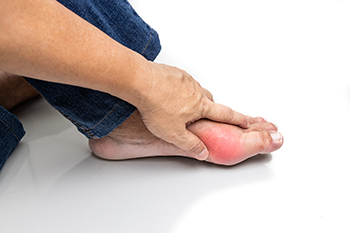
A broken ankle is painful. It can happen from falling and may affect one or more ankle bones. A partial break is considered to be minor, and as the name implies, is not completely cracked. A severely broken ankle happens when the ankle bone breaks in two or more places and can happen on one or both sides of the ankle. The majority of broken ankles require the attention of an expert medical professional, such as a podiatrist. Prior to that, resting and frequently elevating the foot may help to relieve swelling, and it may be helpful to take over-the-counter medicine for pain relief. After a proper diagnosis is performed, which generally consists of having an X-ray taken, treatment can begin. Many people wear a cast or a boot and often use crutches for mobility. During the recovery period, which can last up to 10 weeks, most activities will be temporarily stopped. This may help to give the affected ankle the best chance for a full recovery. If you have broken your ankle, it is strongly suggested that you schedule an appointment with a podiatrist as quickly as possible who can properly diagnose and treat it.
Broken ankles need immediate treatment. If you are seeking treatment, contact one of our podiatrists from Associates in Podiatry. Our doctors can provide the care you need to keep you pain-free and on your feet.
Broken Ankles
A broken ankle is experienced when a person fractures their tibia or fibula in the lower leg and ankle area. Both of these bones are attached at the bottom of the leg and combine to form what we know to be our ankle.
When a physician is referring to a break of the ankle, he or she is usually referring to a break in the area where the tibia and fibula are joined to create our ankle joint. Ankles are more prone to fractures because the ankle is an area that suffers a lot of pressure and stress. There are some obvious signs when a person experiences a fractured ankle, and the following symptoms may be present.
Symptoms of a Fractured Ankle
- Excessive pain when the area is touched or when any pressure is placed on the ankle
- Swelling around the area
- Bruising of the area
- Area appears to be deformed
If you suspect an ankle fracture, it is recommended to seek treatment as soon as possible. The sooner you have your podiatrist diagnose the fracture, the quicker you’ll be on the way towards recovery.
If you have any questions, please feel free to contact our offices located in Pittsburgh-South Hills, and Pittsburgh-Bellevue, PA . We offer the newest diagnostic and treatment technologies for all your foot care needs.




